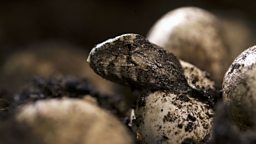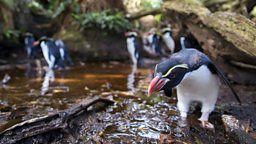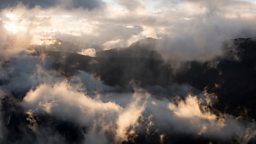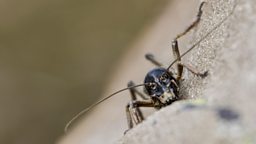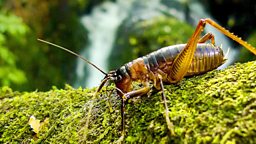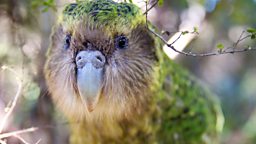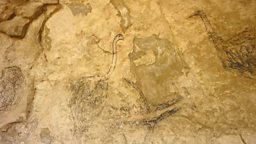Bringing New Zealand’s recent history to life
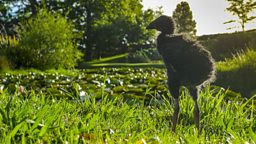
Driving through the moss-laden forests, across stunning volcanic uplands and alongside crystal rivers it can be hard to believe, New Zealand is a land transformed. The kakapo and many other native birds, are unfortunate victims of rapid change, many are now critically endangered. It was a story we had to tell.
Certainly, our actors were quite at home in the garden…
Capturing a historical story requires different techniques than simply observing a contemporary one. For wildlife that includes the use of tame animals to reconstruct scenarios from the recent past. One such animal actor was a charismatic pukeko chick and his family, who we filmed exploring a quintessentially English garden in New Zealand. We wanted to witness a native creature’s point-of-view of this sumptuous, technicolor modern landscape.
Certainly, our actors were quite at home in the garden… so much so, that I had to spend a very memorable and very damp half an hour wading up to my chest in a lily pond to fetch an adult pukeko! New Zealand doesn’t have any native water lilies, but the pukeko’s feet, adapted for crossing swamps, serve perfectly to traverse a lily pond. Certainly, this pukeko didn’t seem to realise that we weren’t quite as well equipped to follow him out on to the lily pads.
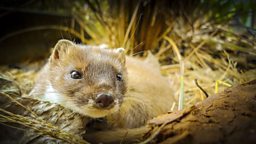
We knew we also had to feature the equally charming but devastating European stoat; a handful were introduced to control other introduced mammals like rabbits. Stoats now number hundreds of thousands, but they’re very rarely seen. Hidden in the shadows, they’ve wreaked havoc for native wildlife. Unlike the rabbits, native birds and reptiles have no defence against quick and scent-led mammalian predators. Of course, the stoats are just doing what they do best… but in New Zealand that’s been extremely destructive.
no animals were harmed in the making of the sequence
To film these elusive predators, we were hosted by a research facility with a small population of wild caught captive stoats, whose behaviour they were studying to develop new technology to protect native animals in the future. Our star was a truly enchanting animal, entirely comfortable in our presence, despite his wild beginnings, but also entirely unpredictable. He spent large parts of every day snoozing, nestled in dry grass, lulling us into a false sense of security. Inevitably, he’d explode into action just as we started to think of dozing ourselves. He’d explore his enclosure at breakneck speed, vanishing into the vegetation, only to re-emerge impossibly, some distance away.
Filming in a controlled environment was the only way we could show the stoat at its predatory best, without risking the lives of native birds. I’m glad to say, no animals were harmed in the making of the sequence. Instead, ours is a reconstruction based on tens of hours of camera trap footage captured all over New Zealand of stoats in action, eating eggs and killing, not only chicks, but also large birds like the blue duck. Even the lumbering kakapo is a potential meal for the fearless stoat.

